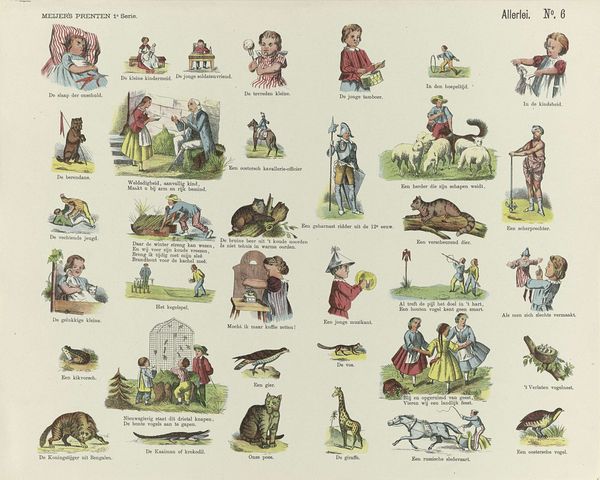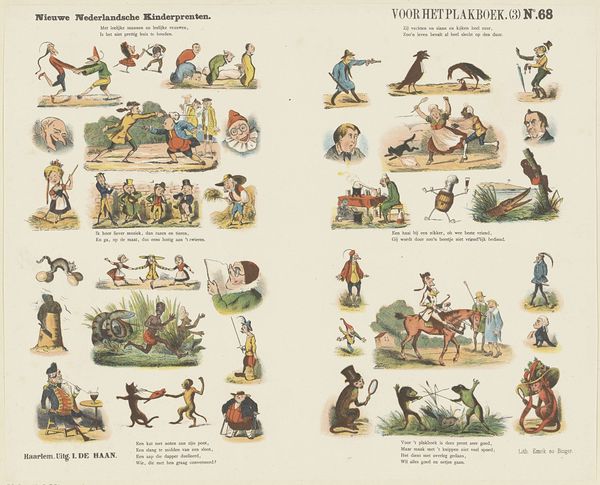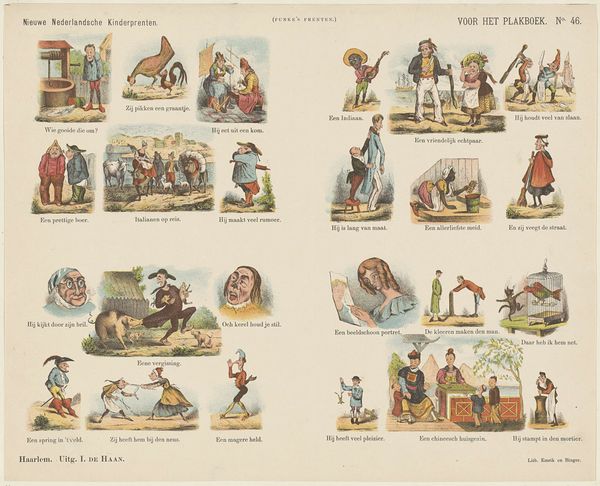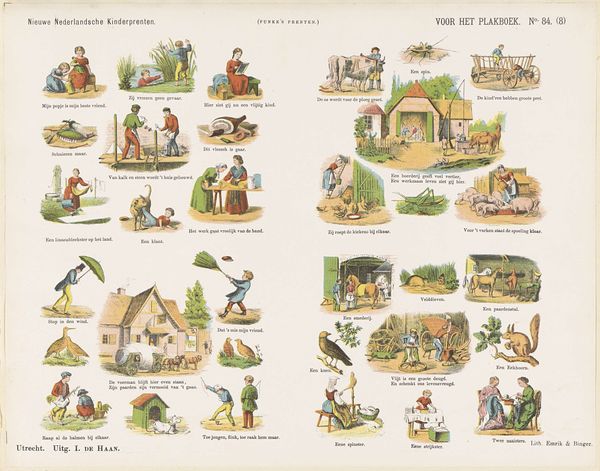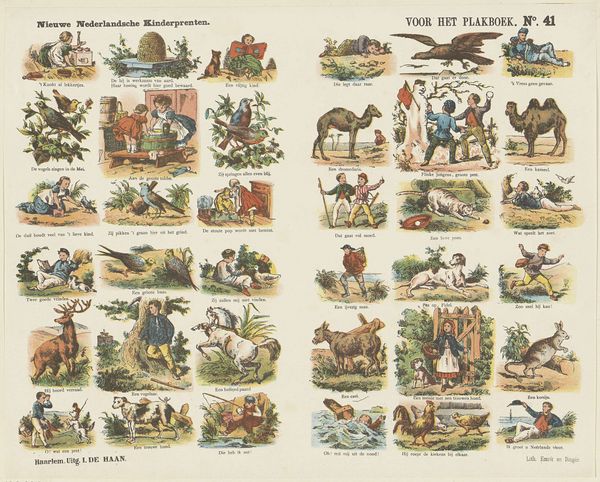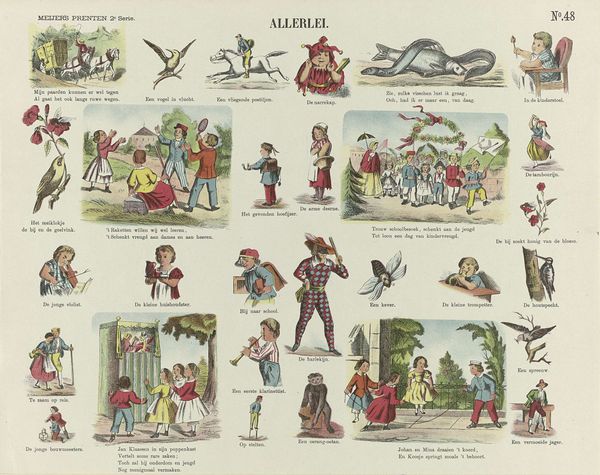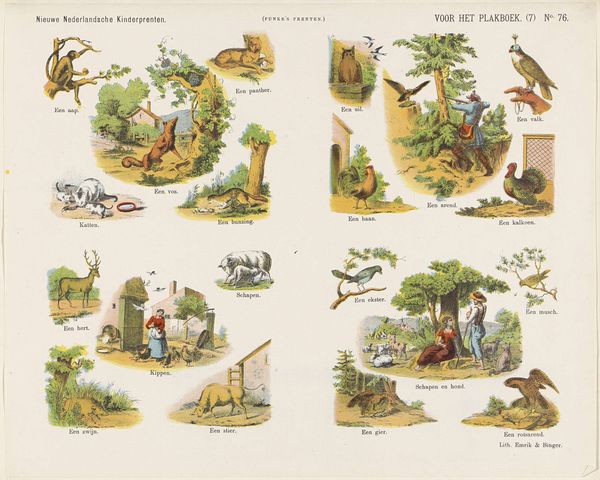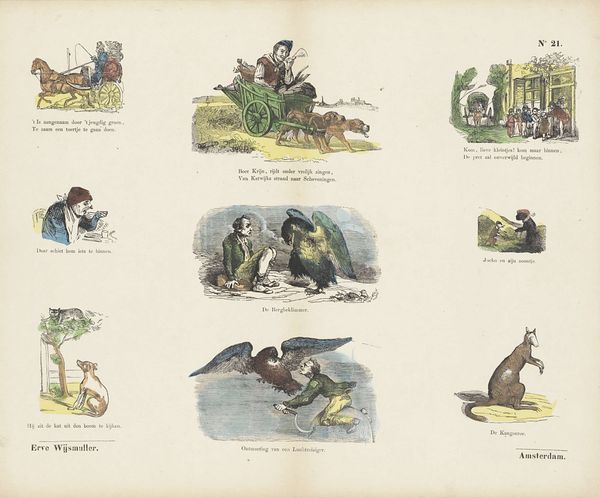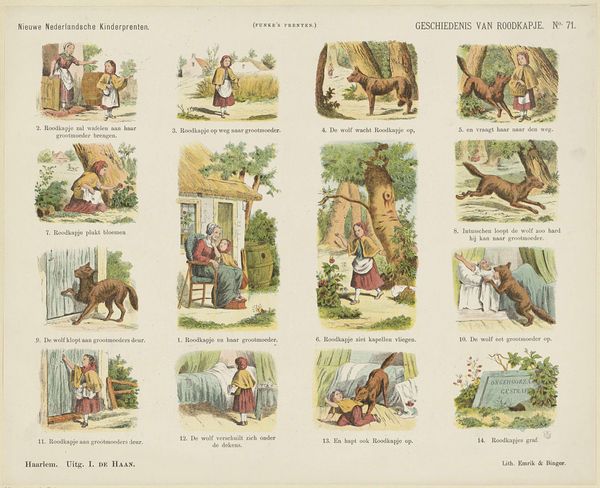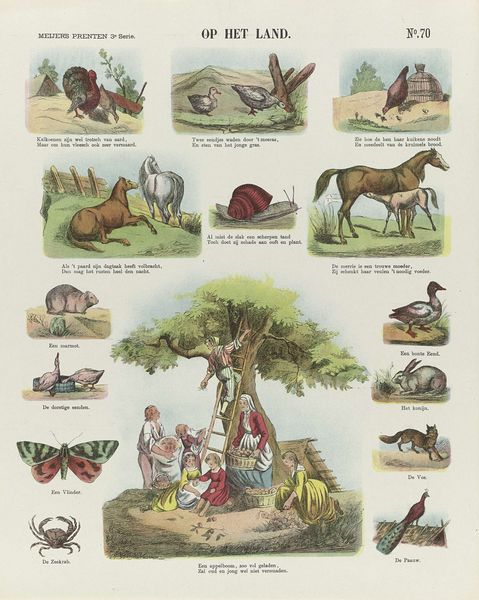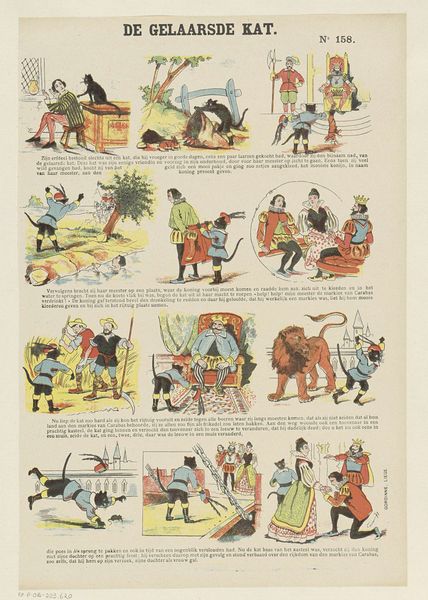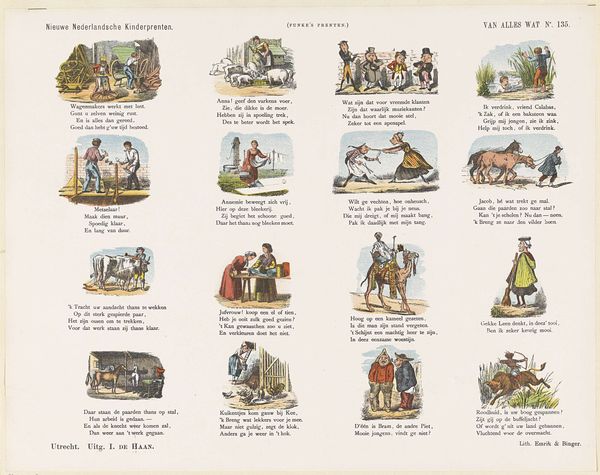
drawing, print
#
drawing
#
narrative-art
# print
#
folk-art
#
cityscape
#
genre-painting
#
academic-art
Dimensions: height 343 mm, width 429 mm
Copyright: Rijks Museum: Open Domain
Editor: This charming print, "Allerlei," created in 1873 by De Ruyter & Meijer, appears to be a collection of folksy scenes and objects, almost like an illustrated encyclopedia for children. There's such a range of imagery. What story does this patchwork of images tell, in your view? Curator: It's fascinating how this print packages the world for young eyes. Look at the ordered grid and consider the burgeoning industrialization of the 19th century. The "Allerlei," or "miscellany," functions almost as a social catalogue, showcasing not only objects and animals but different types of people, reflecting a broader cultural project of classification. Editor: So it’s not just a random assortment then? The figures seem posed; the images are labeled… Curator: Precisely. Think of the expanding public school systems at the time. These prints were likely pedagogical tools meant to impart not just knowledge but also specific social values. What roles are the children depicted playing? Who gets to be active, who is passive? What stories are implicitly being told about labor, leisure, and social hierarchy? Editor: That makes sense. I was so focused on the charming aesthetic that I didn't really consider its place within that historical educational structure. It’s clearly reinforcing particular views, isn’t it? Curator: Indeed. And the printing itself democratizes image access, even as it reinforces existing social structures. It invites us to think critically about how institutions – even something as seemingly innocuous as a children’s print – shape our perceptions of the world. Editor: I see, so understanding the social and educational context really enriches our understanding of why it was created, and what it was *for*. I'll definitely look at children’s books differently now.
Comments
No comments
Be the first to comment and join the conversation on the ultimate creative platform.
